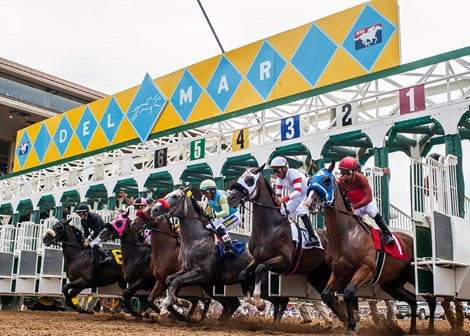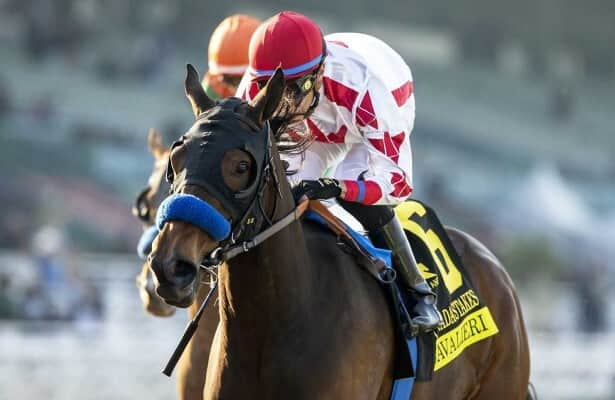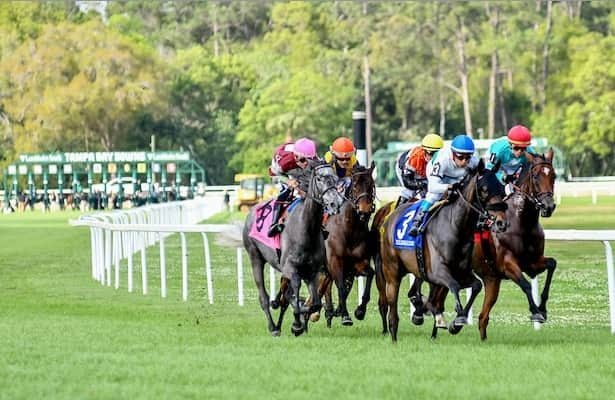“Don’t it always seem to go, that you don’t know what you’ve got ’til it’s gone. They paved paradise, put up a parking lot.” —Joni Mitchell, 1970
In a variety of recent public media forums, representatives of The Stronach Group asserted that the company is committed to the Thoroughbred sport and that they could shut down their racing operations any time they wanted, with the intention of selling their properties to developers.
An understandable reaction would be to view the statements as contradictory. But, in fact, both can be true. That leaves it up to the people in the industry beyond Stronach’s borders to decide which one to believe more than the other.
Spoiler alert: it is not a difficult choice. For some time the line from Stronach representatives is that the various stakeholders need to “sit down” together and “have a conversation” about the future. It is clear, however, that the conversation will revolve around the concept of the future according to The Stronach Group, for which live Thoroughbred racing has gone from representing a means to an end to an outright impediment to achieving those ends.
In an interview on the NBC telecast of the Pegasus day races from Gulfstream Park last weekend, Belinda Stronach repeated the need to talk about racing’s future, while shying away from the notion that her tracks could be shut down any time the company chose. Instead, Stronach deployed the idea that horses might be better off elsewhere anyway.
“Gulfstream Park is now in a very dense, urban setting, and that’s not great for horses, ultimately,” Stronach said early in the interview with Britney Eurton. Then, later, she repeated, “We don’t need to be in a dense, urban setting. That really isn’t the best for horses. We need a long-term plan.”
Stronach also extolled the virtues of the deal in Maryland that has deeded Pimlico Race Course to a quasi state agency in exchange for closing Laurel Park in three years for property development. The Stronach Group also retained licensing rights to the Preakness Stakes (G1), which amounts to a couple million dollars a year in found money.
In this case, Stronach seemed to have no qualms about sentencing Maryland’s racehorse population to a dense, very urban Baltimore neighborhood, while closing a suburban track flanked on two sides by idyllic forests.
In fact, the health of horses has nothing to do with the price of sweet feed, because every conversation seems to begin and end with the potential value of the land on which tracks like Gulfstream Park and Santa Anita Park sit, and how much more that land is worth to The Stronach Group in real estate development. Just like Laurel.
Santa Anita Park
Indeed, there are even voices outside the company who sympathize with such statements, shrugging in helpless resignation that they’d probably feel the same way if they were in the shoes of The Stronach Group. Such is the pernicious influence of economist Milton Friedman, who in 1970 put forth the doctrine of shareholder primacy, to wit:
“There is one and only one social responsibility of business—to use its resources and engage in activities designed to increase its profits so long as it stays within the rules of the game.”
Colin Mayer, former dean of Saïd Business School at the University of Oxford, is among more modern economists pushing back on the Friedman Doctrine. In 2019, Mayer told a conference at Harvard’s Kennedy School, “It’s only over the last 60 years that this notion that business has only one purpose, to make money.
“The purpose of business is not to produce profits,” Mayer went on. “The purpose of business is to produce profitable solutions to the problems of people and planet. And in the process, it produces profits. But profits are not per se the purpose of business. Everyone who runs successful businesses knows that to be the case, and they don’t profit from producing problems for people and planet. Instead what they do is they commit to a common purpose, and they commit to those who help to create that common purpose.”
It is not that Stronach’s racing properties are losing money. It’s that they are not making enough money, especially when compared to possible real estate deals that have been framed in the billions. Racetracks once held their own in terms of profitability—even in California—when all of the betting was handled on-track and attendance flourished. Land may have been marginally more valuable, but it was not worth going out of the racing business for a quick sale to developers.
Santa Anita Park has been in the crosshairs of development talk for years, a possible fate made even more viscerally real by the abrupt closure of Golden Gate Fields by The Stronach Group in 2024. Consider the pattern: Less than a month after Golden Gate is shuttered, The Stronach Group exits Maryland racing and takes down a racetrack with them. Now, decoupling of the racetrack casino from the mandated attachment to its Gulfstream Park host is boiling in Florida, accompanied by the notion that failing to develop the track property for “higher use” would be unthinkable.
Since the firestorm of criticism ignited by the Santa Anita breakdowns of 2019, there has been concern over racing to maintain its social license to exist. Colin Mayer and other reformers also would question the social license for certain businesses to operate as corporations or as private, family-held concerns, like The Stronach Group. Mayer insists there is an obligation not only to “shareholders” demanding profit, but also to the many stakeholders who have come to depend on the existence of a business for their welfare.
Whatever happens in Florida will not stay in Florida. Despite company protestations, Santa Anita is up for sale to a developer at the right price. The San Luis Rey Downs Training Center, also owned by The Stronach Group, could go the same way. Come that day, racing interests in California would turn its lonely eyes to Del Mar as its last gasp.

Del Mar
“It is not the end of the world for us,” said Del Mar Thoroughbred Club CEO Joe Harper, when asked what happens if Santa Anita closes.
“The big thing is, where do we get the horses?” Harper said. “A plan would be, if we lose Santa Anita, we need a training center. If San Luis Rey can survive with Santa Anita going away, we’d need to make some kind of deal for that, or some other place.
“Of course, ‘year-round’ racing won’t look the same at Del Mar,” Harper added. “Basically, we’d have our summer meet, our fall meet, and some other meet somewhere along the line. But since the property is owned by the state, they can’t sell us. And we’re pumping $3 or $4 million a year into the kitty to pay back the bond issue that built the new grandstand, so they kind of need us.”
That’s about as reassuring as things stand right now, at least in California. And that Joni Mitchell lyric, from Big Yellow Taxi, written the same year Friedman proposed his doctrine? Seems quaint now, a tune that fell on deaf ears. Joni even adds a giggle at the end of the song, as if she knew it never would be taken seriously by anyone who could do anything about the repaving of paradise.












